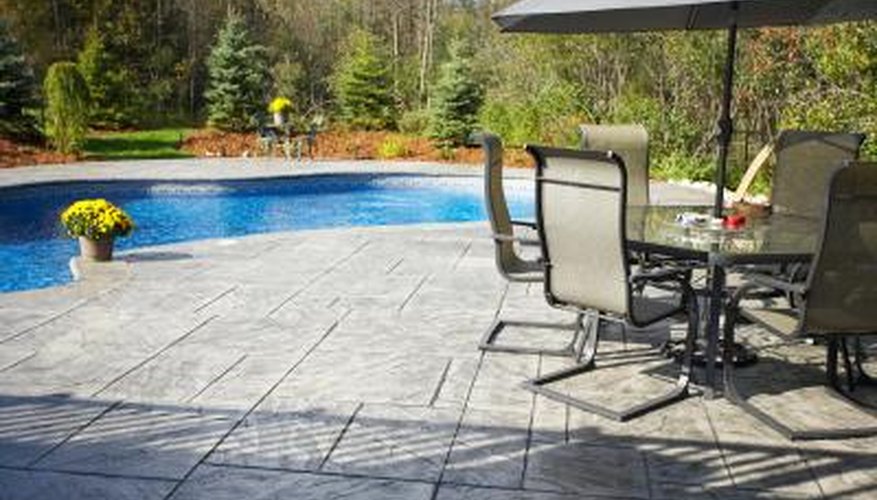When it comes to choosing a surface material for a patio, homeowners are often drawn to flagstone because of its elegant appearance. Its expensive price tag, however, also deters many people from using it, particularly if there is a large area to be covered. Fortunately several alternative patio materials yield a similar look and feeling to flagstone without breaking the bank.
Stone Veneer
Stone veneer is a composite material made of a thin layer of real flagstone on top of another less costly paving material, normally concrete. As a result, stone veneer is lighter than flagstone and is easier to cut, so special equipment is not required to trim the veneer in order to fit oddly shaped patios. Stone veneer is just as durable as flagstone and requires relatively little maintenance. It is an ideal option if you are on a budget and are considering making your patio a do-it-yourself project.
- Stone veneer is a composite material made of a thin layer of real flagstone on top of another less costly paving material, normally concrete.
- As a result, stone veneer is lighter than flagstone and is easier to cut, so special equipment is not required to trim the veneer in order to fit oddly shaped patios.
Concrete Pavers
Pavers are masonry stones made from concrete, but they are more durable and less prone to cracking than poured concrete. Concrete pavers are available in a wide range of colours and shapes--opt for a style that mimics the look of natural stone if you truly want to emulate the look of flagstone. In addition, concrete pavers are easy to install, which allows you the option of installing your patio yourself to save money. A concrete paver patio is also extremely low maintenance, typically requiring only sweeping and an occasional hosing down or pressure-washing.
- Pavers are masonry stones made from concrete, but they are more durable and less prone to cracking than poured concrete.
- In addition, concrete pavers are easy to install, which allows you the option of installing your patio yourself to save money.
Stamped Concrete
Unlike concrete pavers, stamped concrete is poured and not made from individual paving stones. Before the concrete sets, it is stamped with a pattern that can make it look like a variety of natural paving materials, including flagstone. Dye or stain is usually added to stamped concrete to make its stone-like appearance even more authentic. The benefit of a stamped concrete patio is that it is stronger than real flagstone and, because it comes in one large sheet, you will not have to deal with cracked or loose individual stones later.
- Unlike concrete pavers, stamped concrete is poured and not made from individual paving stones.
- Before the concrete sets, it is stamped with a pattern that can make it look like a variety of natural paving materials, including flagstone.
Brick
For a warm, traditional look, consider using brick. Brick provides an extremely durable patio surface because it is set in mortar. It may be installed on top of either a concrete or sand base. The uniform size and shape of the brick allows you to create simple patterns, and its red hue complements the green of a garden area extremely well. Brick's warm earth tones instantly give your patio a welcoming vibe that translates into an appealing outdoor entertaining area.
- For a warm, traditional look, consider using brick.
- The uniform size and shape of the brick allows you to create simple patterns, and its red hue complements the green of a garden area extremely well.
